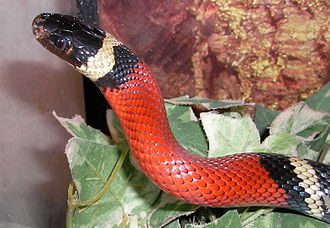Type the name of the breed you're looking for below
[wpdreams_ajaxsearchlite] Don't see the breed your're looking for? Click here and let us know!
Sinaloan milk snake
| Place of Origin and Range | The Sinaloan milk snake inhabits the dry, arid and rocky semi-desert regions in south west Sonora, Sinaloa and south western Chihuahua, Mexico. |
| Description | The Sinaloan milk snake is predominantly blood red with distinct rings or bands of black which have thinner cream-coloured or yellowish bands within the black bands.The red rings are bordered near the edge by black pigment, leaving the centre of the triad (on the ventral side) with a creamy white. The Sinaloan milk snake is easily distinguished from other subspecies because of the very broad bands of red which are wider than in most other subspecies (three times the width of the black bands). The head is black with a thin yellowish or cream-coloured band just behind the eyes across the top of the head. The belly is yellowish or creamy white. |
| Morph Patterns Available | Yes |
| Adult Size | Can grow up to 4 feet(1.2m) |
| Accommodation | Sinaloan Milk snakes are not unlike other snakes when it comes to their habitat. Living in a wide variety of habitats.High humidity (60-80%), Branches for climbing and sun bathing. A minimum of two hides, a warm one and a cooler one. Snakes are cold blooded animals and regulate their body heat by soaking in the sun or hiding in the shade. A Day basking Lamp(basking spot 80'F(27'C) or some snake owners prefer under tank heating. Also you want to include a bathing dish big enough for your snake to climb in without overflowing. |
| Lifespan | Can live 15-20 years |
| Feeding / Diet | Depending on the size of your snake you may require mice, or rats. Frozen feed can be found and is recommended due to health risks with using live food. |
| Other Considerations | Snakes are relatively hardy low maintenance animals when kept in the correct environment, and require little day to day care other than feeding and cleaning out the tank as required. However, like all animals, they can still become sick or injured despite our best intentions to prevent this. |



